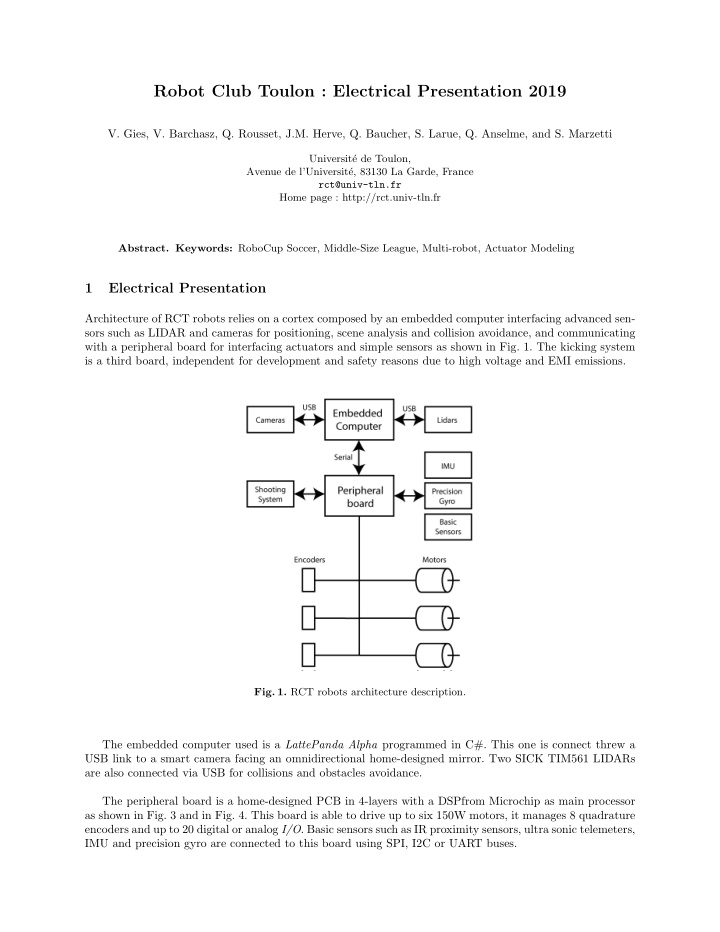



Robot Club Toulon : Electrical Presentation 2019 V. Gies, V. Barchasz, Q. Rousset, J.M. Herve, Q. Baucher, S. Larue, Q. Anselme, and S. Marzetti Universit´ e de Toulon, Avenue de l’Universit´ e, 83130 La Garde, France rct@univ-tln.fr Home page : http://rct.univ-tln.fr Abstract. Keywords: RoboCup Soccer, Middle-Size League, Multi-robot, Actuator Modeling 1 Electrical Presentation Architecture of RCT robots relies on a cortex composed by an embedded computer interfacing advanced sen- sors such as LIDAR and cameras for positioning, scene analysis and collision avoidance, and communicating with a peripheral board for interfacing actuators and simple sensors as shown in Fig. 1. The kicking system is a third board, independent for development and safety reasons due to high voltage and EMI emissions. Fig. 1. RCT robots architecture description. The embedded computer used is a LattePanda Alpha programmed in C#. This one is connect threw a USB link to a smart camera facing an omnidirectional home-designed mirror. Two SICK TIM561 LIDARs are also connected via USB for collisions and obstacles avoidance. The peripheral board is a home-designed PCB in 4-layers with a DSPfrom Microchip as main processor as shown in Fig. 3 and in Fig. 4. This board is able to drive up to six 150W motors, it manages 8 quadrature encoders and up to 20 digital or analog I/O . Basic sensors such as IR proximity sensors, ultra sonic telemeters, IMU and precision gyro are connected to this board using SPI, I2C or UART buses.
Recommend
More recommend